
How to Use Playknowlogy L298N: Examples, Pinouts, and Specs
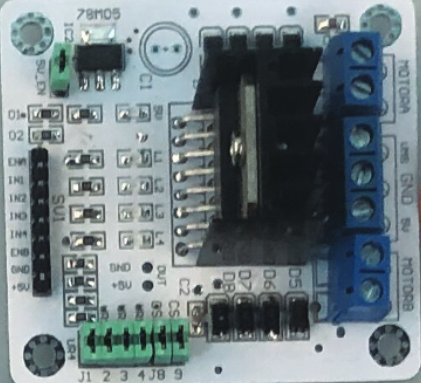
 Design with Playknowlogy L298N in Cirkit Designer
Design with Playknowlogy L298N in Cirkit DesignerIntroduction
The Playknowlogy L298N is a dual H-bridge motor driver designed for controlling two DC motors or a single stepper motor. It is a versatile and robust component that enables bidirectional control of motors, making it ideal for robotics, automation, and DIY electronics projects. With its ability to handle motor voltages ranging from 5V to 35V and a current of up to 2A per channel, the L298N is a popular choice for hobbyists and professionals alike.
Explore Projects Built with Playknowlogy L298N
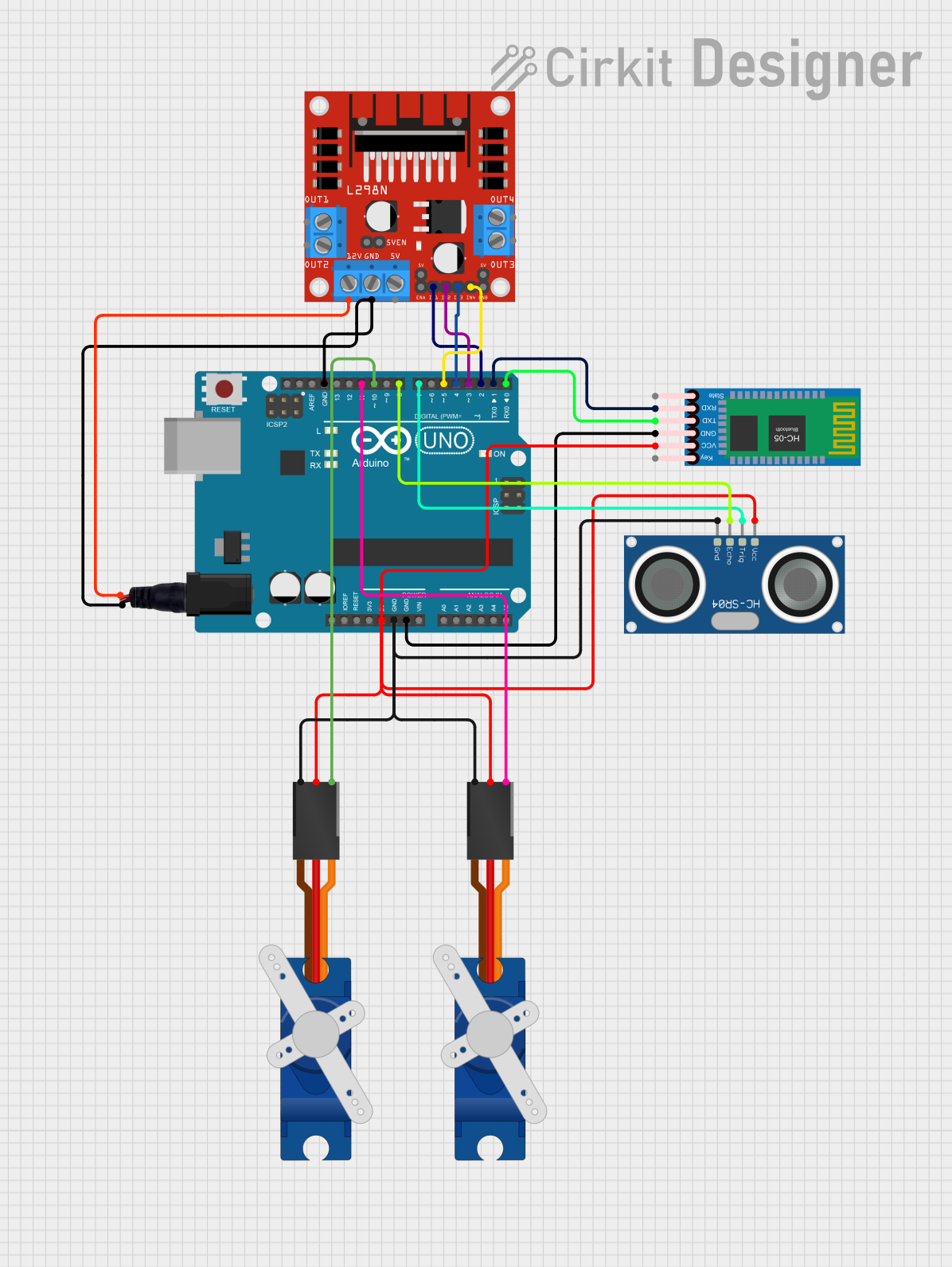
 Open Project in Cirkit Designer
Open Project in Cirkit Designer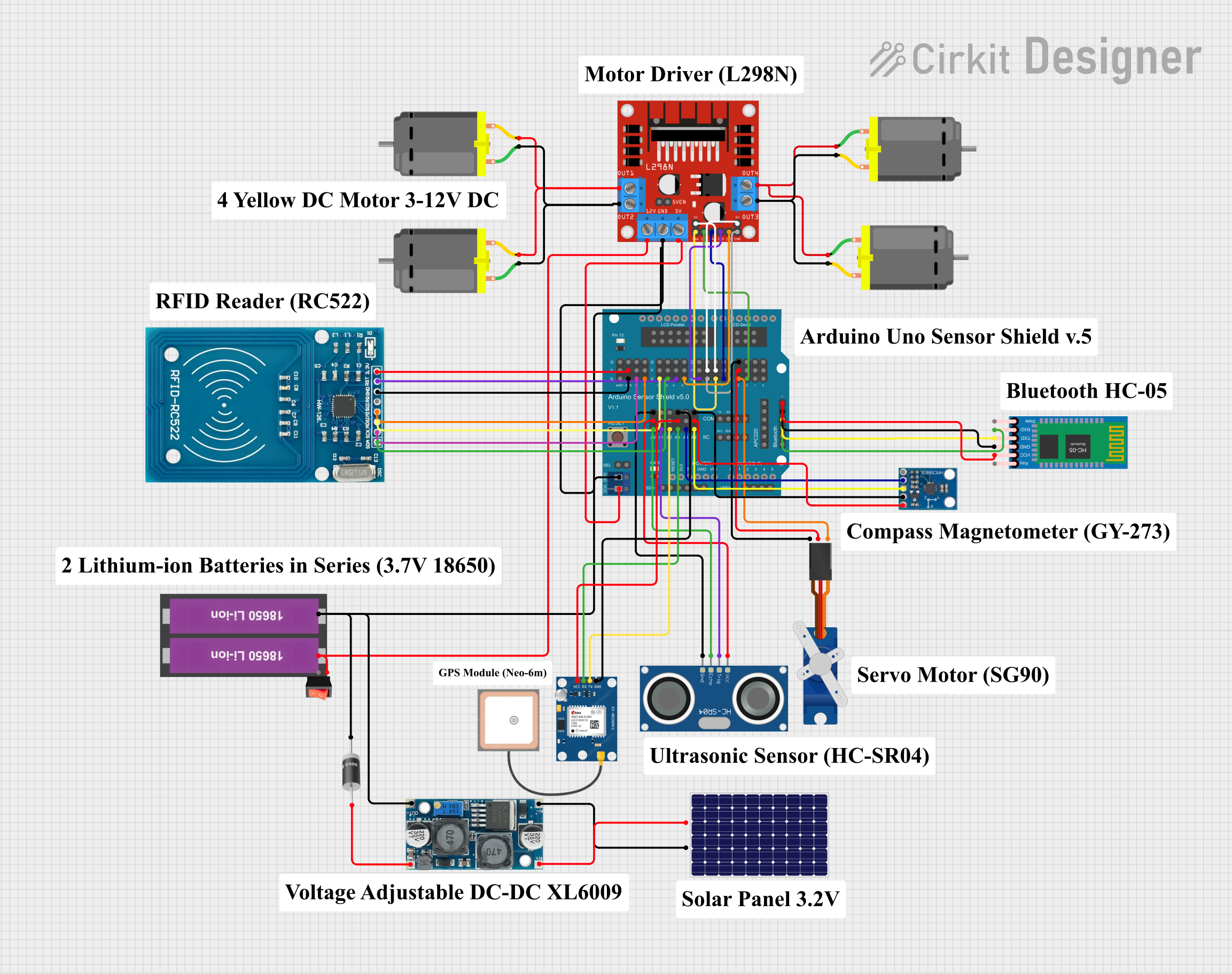
 Open Project in Cirkit Designer
Open Project in Cirkit Designer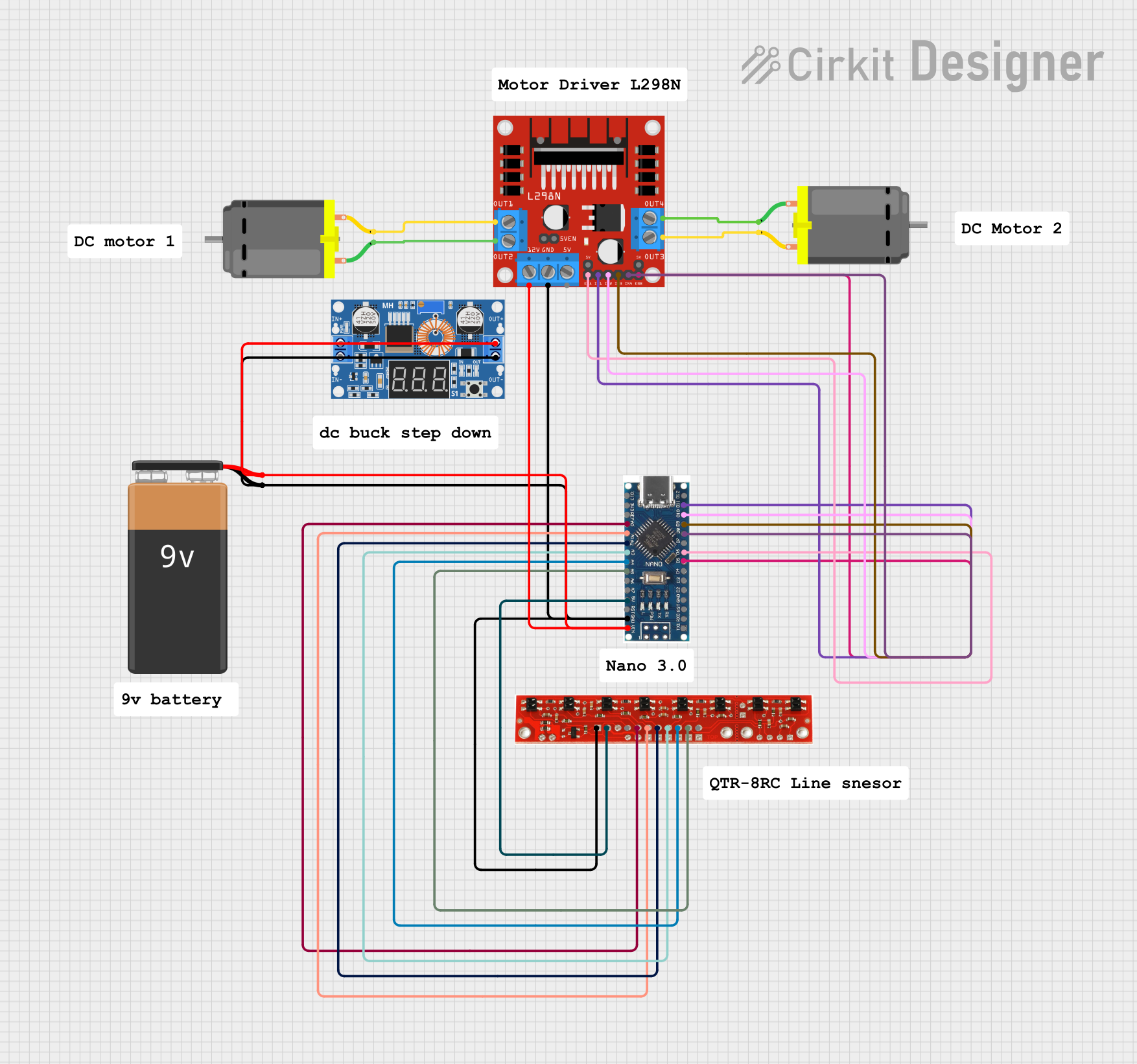
 Open Project in Cirkit Designer
Open Project in Cirkit Designer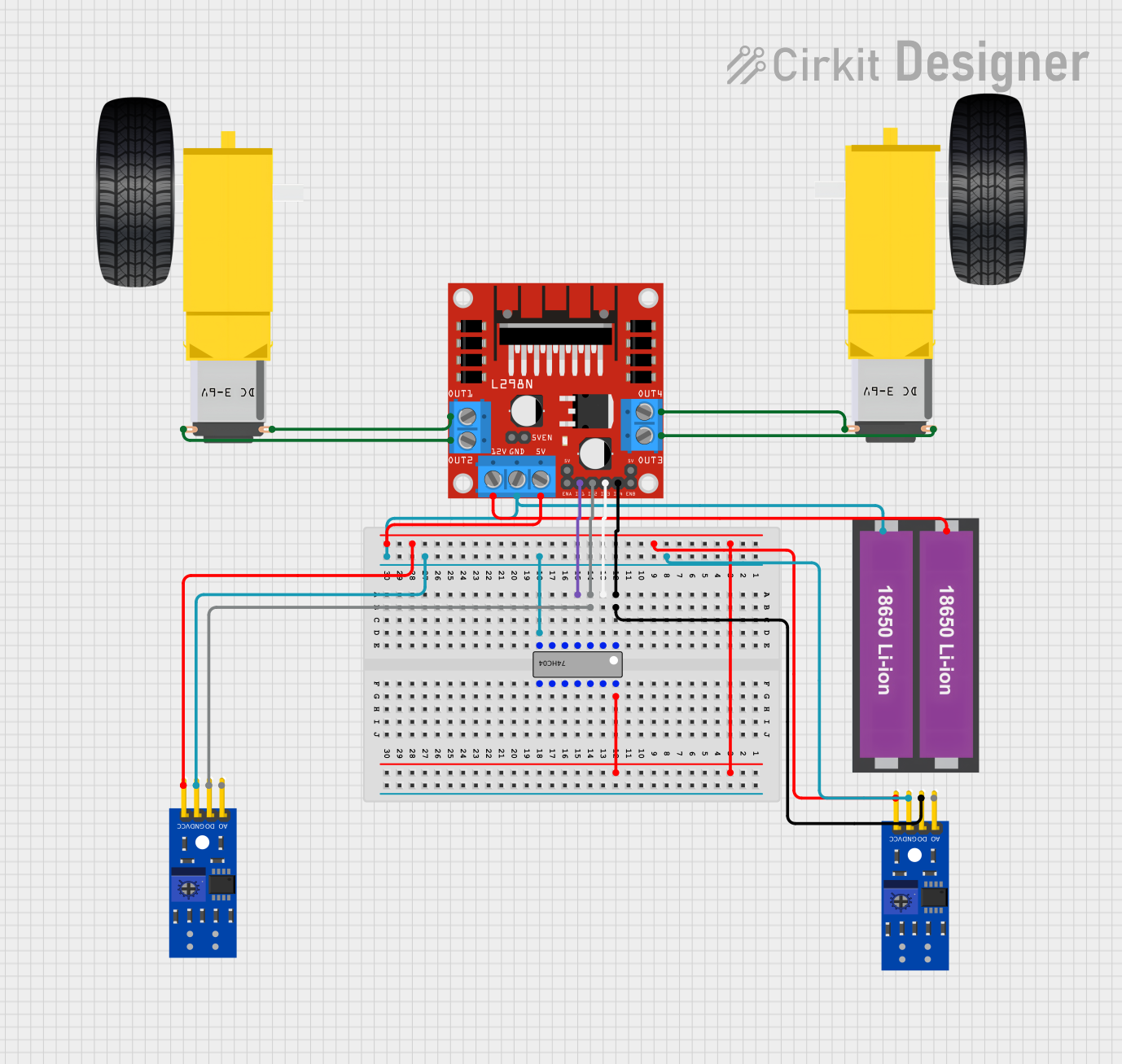
 Open Project in Cirkit Designer
Open Project in Cirkit DesignerExplore Projects Built with Playknowlogy L298N

 Open Project in Cirkit Designer
Open Project in Cirkit Designer
 Open Project in Cirkit Designer
Open Project in Cirkit Designer
 Open Project in Cirkit Designer
Open Project in Cirkit Designer
 Open Project in Cirkit Designer
Open Project in Cirkit DesignerCommon Applications and Use Cases
- Robotics: Driving wheels or tracks of robots
- Automation: Controlling conveyor belts or actuators
- DIY Projects: Building remote-controlled cars or robotic arms
- Stepper Motor Control: Operating stepper motors in CNC machines or 3D printers
Technical Specifications
The following table outlines the key technical details of the Playknowlogy L298N motor driver:
| Parameter | Value |
|---|---|
| Manufacturer | Playknowlogy |
| Part ID | Motor Controller |
| Motor Voltage Range | 5V to 35V |
| Maximum Current (per channel) | 2A |
| Logic Voltage Range | 3.3V to 5V |
| Number of Channels | 2 (dual H-bridge) |
| Control Type | PWM (Pulse Width Modulation) |
| Dimensions | 43mm x 43mm x 27mm |
| Operating Temperature | -25°C to +85°C |
Pin Configuration and Descriptions
The Playknowlogy L298N has the following pin configuration:
| Pin Name | Type | Description |
|---|---|---|
| IN1 | Input | Controls the direction of Motor A (High/Low). |
| IN2 | Input | Controls the direction of Motor A (High/Low). |
| IN3 | Input | Controls the direction of Motor B (High/Low). |
| IN4 | Input | Controls the direction of Motor B (High/Low). |
| ENA | Input (PWM) | Enables and controls the speed of Motor A using PWM. |
| ENB | Input (PWM) | Enables and controls the speed of Motor B using PWM. |
| OUT1 | Output | Connects to one terminal of Motor A. |
| OUT2 | Output | Connects to the other terminal of Motor A. |
| OUT3 | Output | Connects to one terminal of Motor B. |
| OUT4 | Output | Connects to the other terminal of Motor B. |
| VCC | Power Input | Supplies motor voltage (5V to 35V). |
| GND | Ground | Common ground for the circuit. |
| 5V | Power Output | Provides 5V output for external logic circuits (if jumper is connected). |
Usage Instructions
How to Use the Component in a Circuit
- Power Supply: Connect the motor power supply to the
VCCpin (5V to 35V) and the ground to theGNDpin. - Logic Power: If using a 5V logic system (e.g., Arduino), connect the
5Vpin to the Arduino's 5V pin. If using a 3.3V logic system, ensure compatibility with the logic inputs. - Motor Connections:
- Connect the terminals of Motor A to
OUT1andOUT2. - Connect the terminals of Motor B to
OUT3andOUT4.
- Connect the terminals of Motor A to
- Control Pins:
- Use
IN1andIN2to control the direction of Motor A. - Use
IN3andIN4to control the direction of Motor B. - Use
ENAandENBto control the speed of Motor A and Motor B, respectively, using PWM signals.
- Use
- Jumper Settings: If the onboard 5V regulator is used, ensure the jumper is connected to the
5Vpin. Remove the jumper if an external 5V logic supply is used.
Important Considerations and Best Practices
- Heat Dissipation: The L298N can get hot during operation. Use the onboard heatsink or an external cooling solution for prolonged use at high currents.
- Current Limitation: Do not exceed the 2A per channel current limit to avoid damaging the driver.
- Power Supply: Ensure the motor power supply voltage matches the motor's rated voltage.
- Decoupling Capacitors: Add decoupling capacitors near the power supply pins to reduce noise and improve stability.
Example Code for Arduino UNO
Below is an example code snippet to control two DC motors using the Playknowlogy L298N and an Arduino UNO:
// Define motor control pins
const int IN1 = 7; // Motor A direction control pin 1
const int IN2 = 6; // Motor A direction control pin 2
const int ENA = 5; // Motor A speed control (PWM)
const int IN3 = 4; // Motor B direction control pin 1
const int IN4 = 3; // Motor B direction control pin 2
const int ENB = 2; // Motor B speed control (PWM)
void setup() {
// Set motor control pins as outputs
pinMode(IN1, OUTPUT);
pinMode(IN2, OUTPUT);
pinMode(ENA, OUTPUT);
pinMode(IN3, OUTPUT);
pinMode(IN4, OUTPUT);
pinMode(ENB, OUTPUT);
}
void loop() {
// Motor A: Forward at 50% speed
digitalWrite(IN1, HIGH);
digitalWrite(IN2, LOW);
analogWrite(ENA, 128); // PWM value (0-255)
// Motor B: Backward at 75% speed
digitalWrite(IN3, LOW);
digitalWrite(IN4, HIGH);
analogWrite(ENB, 192); // PWM value (0-255)
delay(2000); // Run motors for 2 seconds
// Stop both motors
digitalWrite(IN1, LOW);
digitalWrite(IN2, LOW);
digitalWrite(IN3, LOW);
digitalWrite(IN4, LOW);
analogWrite(ENA, 0);
analogWrite(ENB, 0);
delay(2000); // Wait for 2 seconds
}
Troubleshooting and FAQs
Common Issues and Solutions
Motors Not Running:
- Ensure the power supply is connected and providing the correct voltage.
- Verify that the control pins are correctly connected to the microcontroller.
- Check for loose connections or damaged wires.
Overheating:
- Reduce the motor load or current draw.
- Use an external cooling solution, such as a fan or additional heatsink.
Erratic Motor Behavior:
- Add decoupling capacitors near the motor terminals to suppress electrical noise.
- Ensure the PWM signal is stable and within the correct frequency range.
No Output on 5V Pin:
- Check if the jumper is connected to enable the onboard 5V regulator.
- Ensure the input voltage to
VCCis at least 7V for the regulator to function.
FAQs
Q: Can the L298N control stepper motors?
A: Yes, the L298N can control a bipolar stepper motor by using both H-bridge channels. You will need to sequence the control signals appropriately.
Q: Can I use the L298N with a 3.3V microcontroller?
A: Yes, the L298N is compatible with 3.3V logic levels, but ensure the control signals are within the acceptable range.
Q: What is the maximum PWM frequency supported?
A: The L298N typically supports PWM frequencies up to 20 kHz, but lower frequencies (1-10 kHz) are recommended for optimal performance.